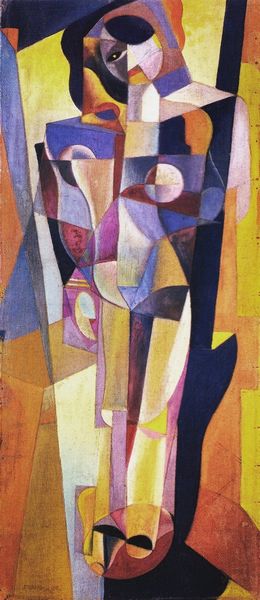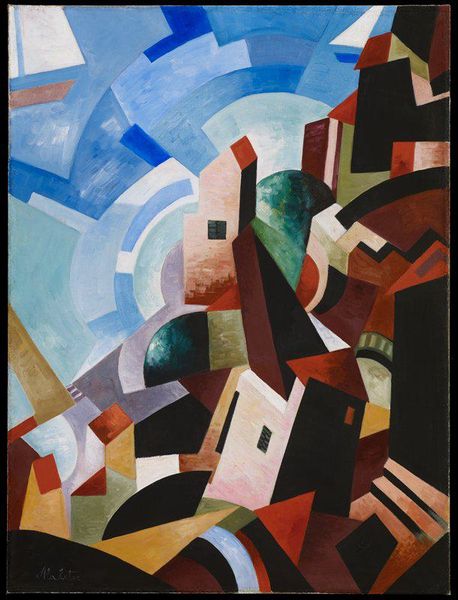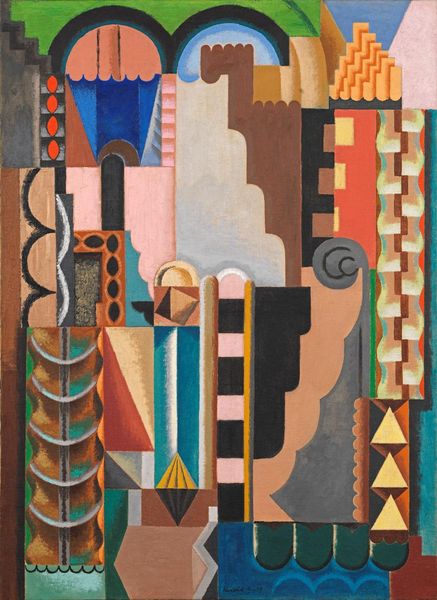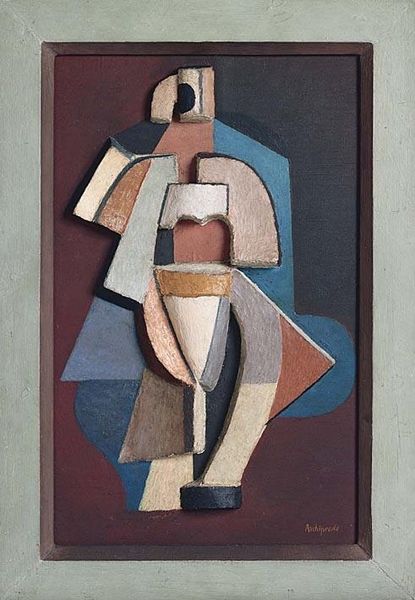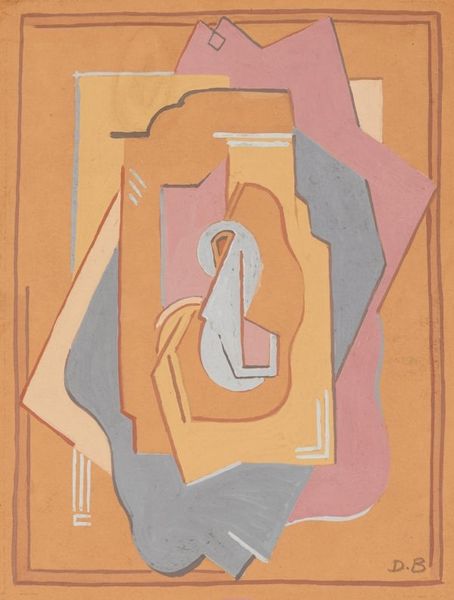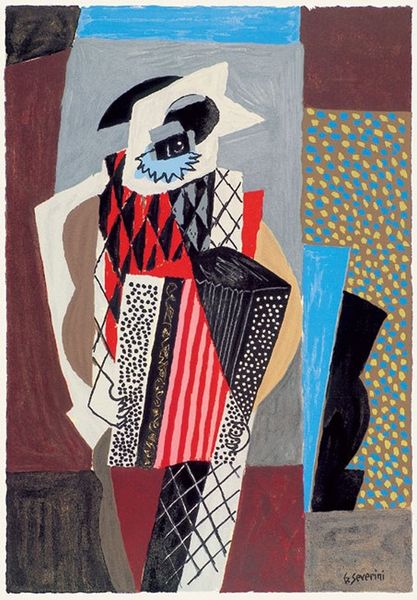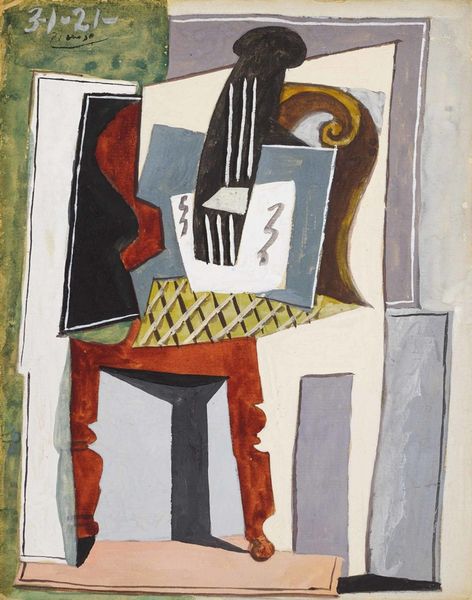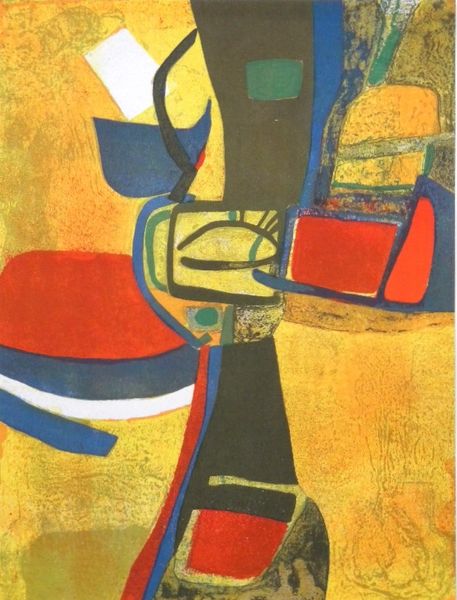
mixed-media, painting
#
cubism
#
mixed-media
#
painting
#
figuration
#
geometric
#
abstraction
Copyright: Public domain US
Editor: This is Gösta Adrian-Nilsson’s "Figurer I Trappa," created in 1923, and appears to be a mixed-media painting. I'm immediately struck by how the figures seem to almost disappear into the geometric forms of the staircase. What do you see in this piece, especially considering the context of its time? Curator: I see a deliberate commentary on the changing societal landscape of the early 20th century. Notice how the figures are stylized and somewhat anonymized, becoming part of the architectural space. This speaks to the era's increasing industrialization and urbanization, where the individual often felt absorbed into the larger social machine. Editor: That makes a lot of sense. So the staircase isn't just a staircase, but a representation of a societal structure? Curator: Precisely. Consider the historical context. The 1920s were a period of immense social and political upheaval. Artists like Adrian-Nilsson were grappling with rapid modernization and its impact on human identity. The geometric abstraction, borrowing from Cubism, reflects the fragmented experience of modern life. It's also crucial to examine how the art world and museums reacted to and shaped these types of works – either embracing the radical change, or resisting it. Editor: The use of geometric forms to symbolize fragmentation is really insightful! I'd never considered how social forces shaped something like Cubism so explicitly. Curator: It’s not always a direct cause and effect, but rather a dialogue. The artist responds to, and perhaps critiques, the world around them. This interplay then enters the public sphere, becoming subject to interpretation and debate. Think about who had access to art galleries then and whose stories were being told through such a display of art. Editor: I'm going to view abstract art through a completely new lens now. This was incredibly illuminating; thanks so much! Curator: My pleasure. It’s rewarding to see how these historical layers can enrich our understanding and engagement with art.
Comments
No comments
Be the first to comment and join the conversation on the ultimate creative platform.



